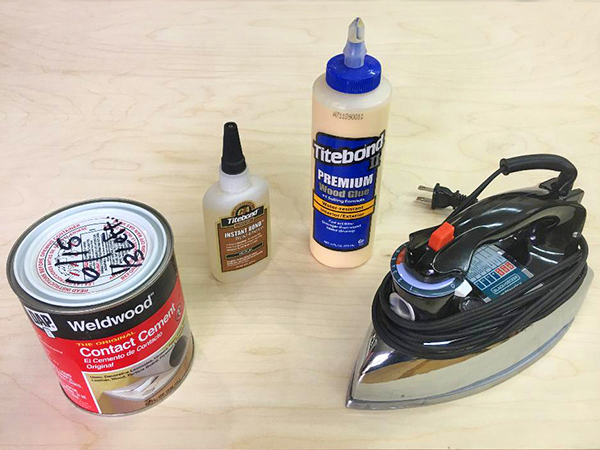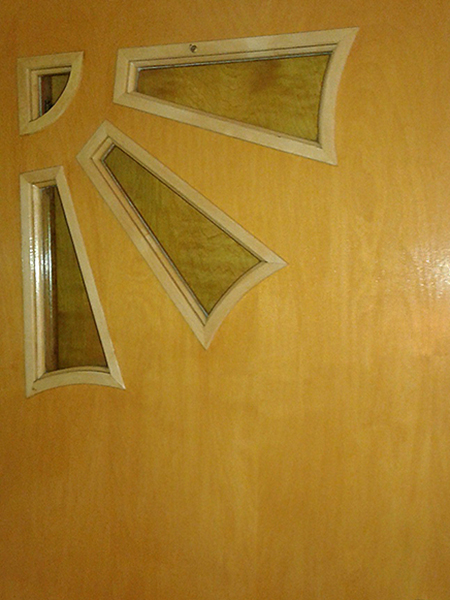
I have a question on veneer application. I put a new birch veneer on our exterior door, using veneer glue. The problem is there are some small areas that did not adhere. Is there some way to inject glue with a needle and then lay a weight on it? – Joseph Raber
Tim Inman: By “veneer glue,” I’m going to guess that you were using a contact cement for your adhesive. The issue you describe is classic with contact cement. There is not a really good answer. But, “Perfect is the enemy of good,” as we so often say in the shop. Yes, you can inject glue into the void area and try to mend the bad spot. The good news is that if it works, you win. The bad news is that, if it doesn’t, you have even more failed glue underneath the wood where you can’t get to it anymore.
So, what to do? First, if you haven’t already, try applying gentle heat and pressure to the area to see if the old glue will still react and bond. I use an old clothes iron set low enough that I can hold my hand against the heated surface without burning myself. Gentle heat. Apply the iron long enough to heat all the way through both layers of veneer — the cross banding and the top veneer. You did apply new cross banding, didn’t you? (No cross banding equals veneer failures like you’re describing, too.)
Next, if that fails, select the adhesive you’ll want to use. More contact cement is probably not the right choice. If you have the confidence and the skill, Cyanoacrylate or “super glue” might be a good choice. It is a bad choice if this is a new glue to you and/or you have not built skill and confidence with its use. To use CA, I would suggest making a cut or slit with the grain using an X-ACTO® type knife. Lift one side of the cut and apply the glue into the void. Immediately roll or press the wood together and hold it in place while the glue cures. By putting a piece of plastic wrap over the veneer and between the weight you’ll use as a clamp, you can avoid bonding the clamp to the veneer – and the plastic can be scraped off with a razor blade, if need be.
Another choice that is more practical for most is yellow glue. Titebond II would be my choice for this. Work some glue into the void. Roll or press it out to assure a coating on both sides of the veneer and the substrate. Let it dry for half a day or overnight. Then use that gentle heat we mentioned above to “weld” the two surfaces back together. You will need clamping pressure (a weight) while the surface cools.
Finally, let me just say that if you applied new veneer over old with the grain on both running the same direction – without a cross grain piece, typically called “cross banding,” in between them — you’re doomed to this trouble erupting forever more. Cross banding is a must in veneer work.






